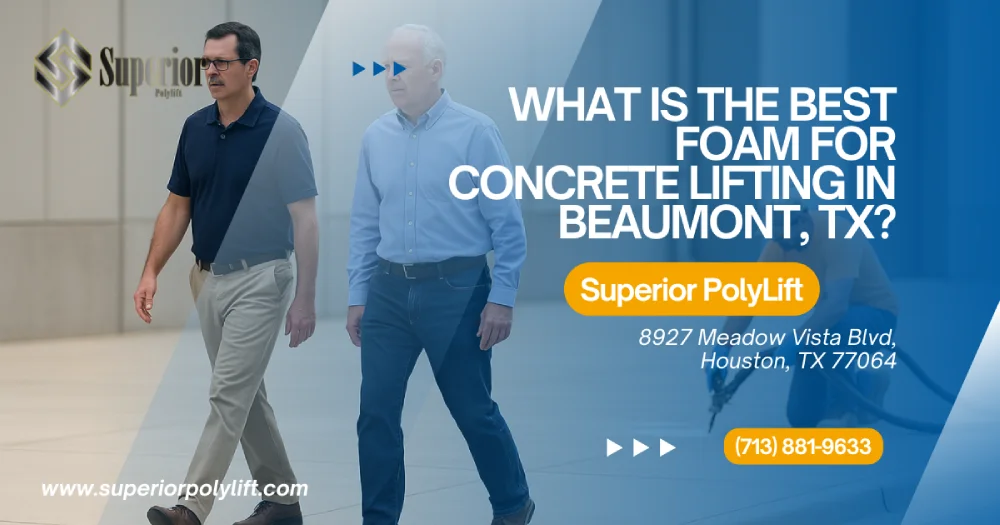
Concrete slabs in Beaumont, TX, endure relentless humidity, high axle loads, and Gulf Coast soil movement. The quickest, most economical way to level sunken concrete is polyurethane injection—often called foam jacking or slabjacking. When foam is injected beneath a concrete slab, it expands, fills every void, and re-establishes grade with minimal disruption. Compared with mudjacking or cement slurry, polyurethane delivers higher compaction, faster cure times, and a smaller carbon footprint. That’s why industrial facilities, ports, and infrastructure projects in Beaumont Texas, increasingly rely on this method to stabilize foundations and concrete surfaces.
Beaumont’s subtropical climate breeds soil erosion, expansive clay, and void formation below heavy pavements. Polyurethane foam counters all three challenges:
Not every Beaumont TX application demands the same foam. Understanding different formulations helps engineers match performance to site requirements.
| Foam Type | Density (pcf) | Typical Application | Lift Strength | Cure Time | Best For |
| Standard | 2–3 | Walkways, sidewalks | Moderate | 10 min | Low live loads |
| Mid-Density | 4–6 | Logistics lanes, parking aprons | High | 15 min | Medium truck traffic |
| High-Density | 8–12 | Highway panels, container yards | Very High | 15–20 min | Heavy 18-wheel & crane loads |
| Geotechnical | 15+ | Bridge approaches, seawall voids | Extreme | 20 min | Structural stabilization |
Reaction can be tuned for hot or cool seasons, ensuring proper expansion, compaction, and penetration into every void beneath the slab.
Knowing the steps helps maintenance planners coordinate the work and manage risk.
Polyurethane injection costs more per pound than mudjacking slurry but delivers a superior 10-year ROI thanks to faster reopening, fewer repeat repairs, and lower indirect costs. Eliminating full concrete replacement also slashes your project’s carbon footprint by reducing cement consumption, truck traffic, and landfill debris. Industrial asset managers in Beaumont TX consistently find foam lifting the most cost-effective solution once downtime and life-cycle factors are considered.
A successful foam jacking project hinges on the right contractor.
Local specialists such as Corsair Concrete Lifting combine Gulf Coast geotechnical expertise with advanced polyurethane injection technology, ensuring every slab, pavement, or concrete foundation is restored quickly and economically.
Polyurethane injection delivers fast, durable, and cost-effective concrete lifting for Beaumont’s most demanding industrial environments. With proper engineering, high-density foam, and a qualified contractor, you can restore level, stable slabs while minimizing downtime, safety risks, and total project cost.

Explore how our expertise can benefit your project. Reach out to our team for a consultation and discover the best solutions for your needs.
Copyright © All rights reserved. 2024 • Terms of Use and Privacy Policy • Internet Marketing by Authority Solutions®